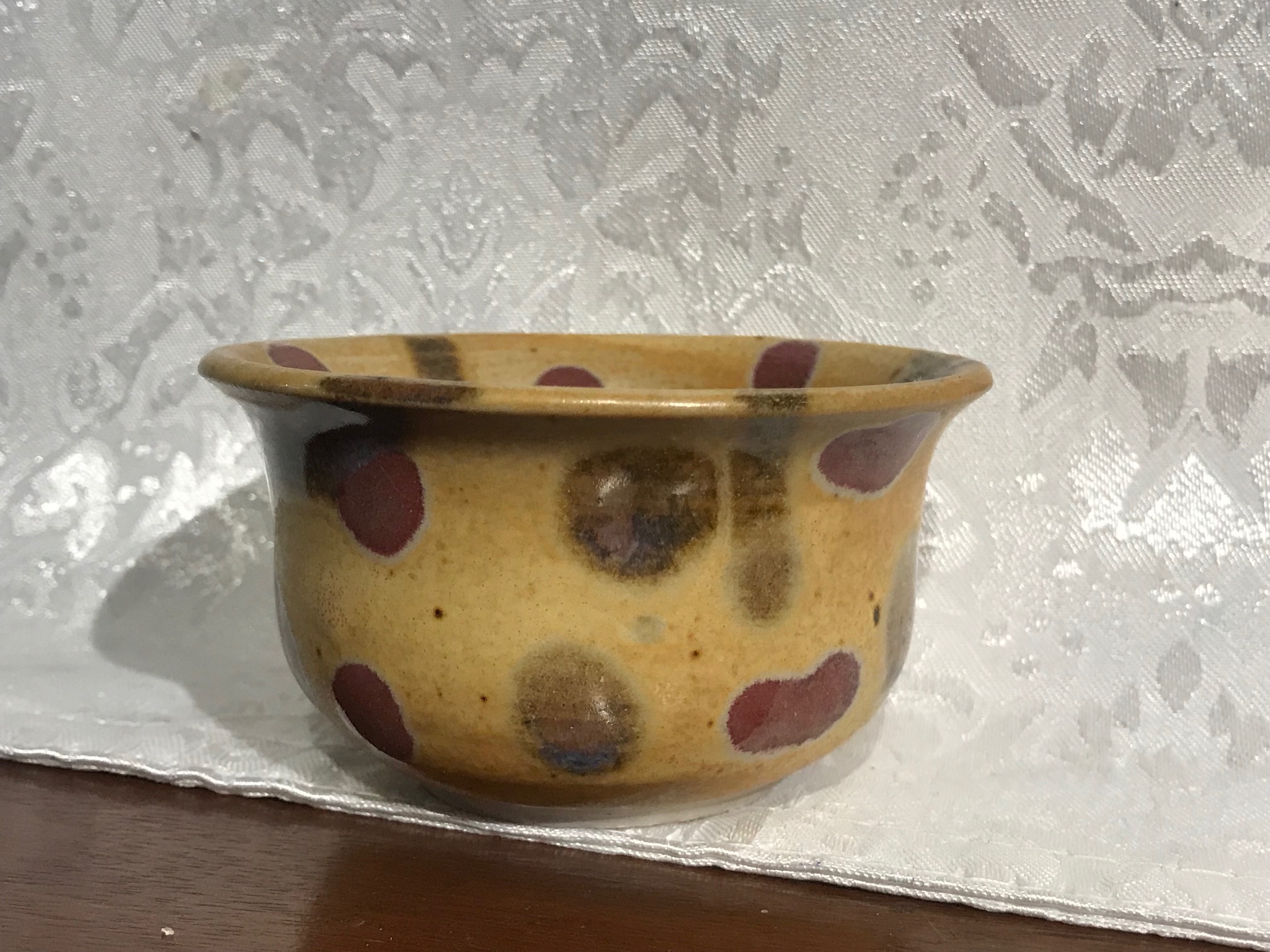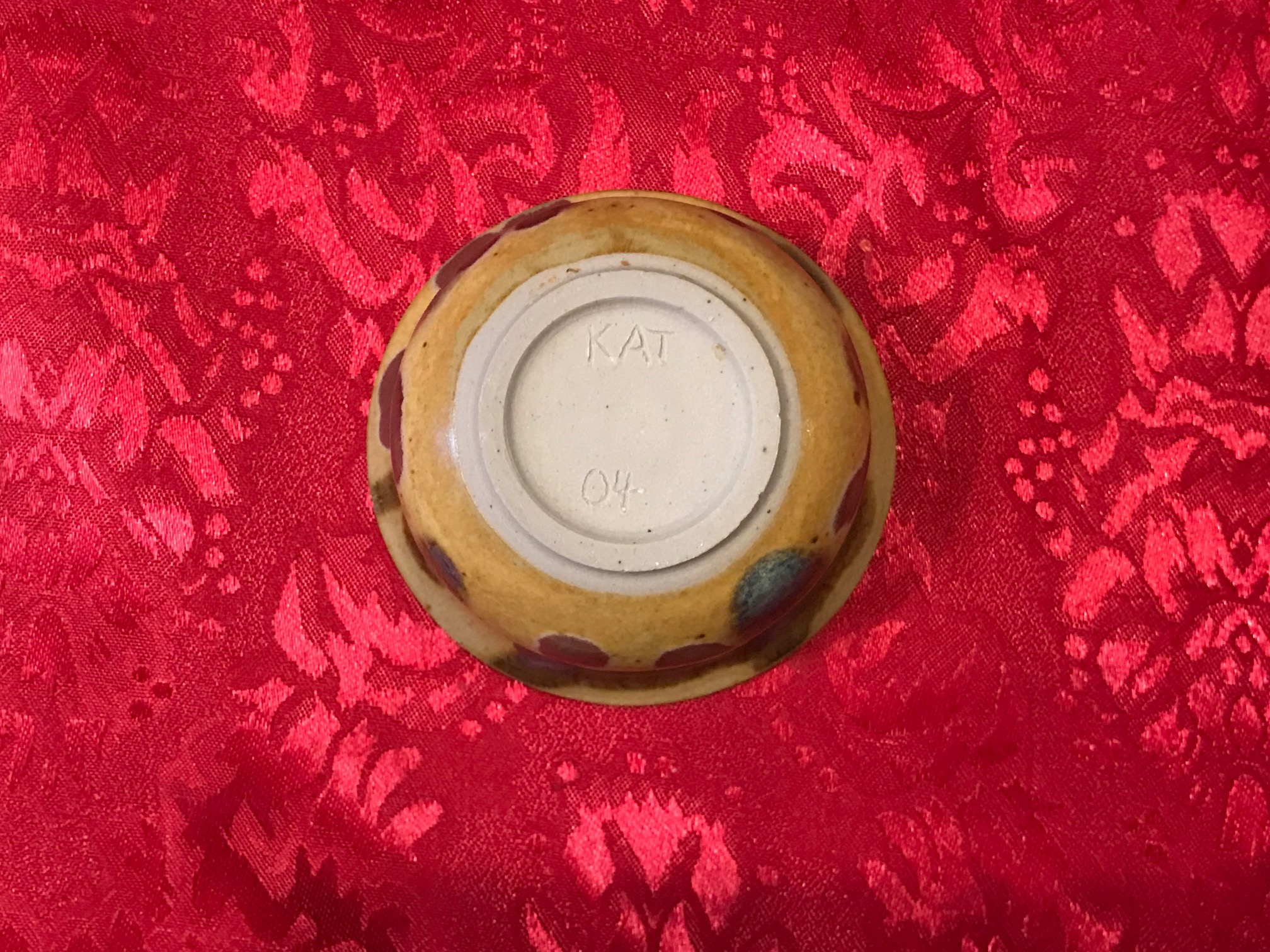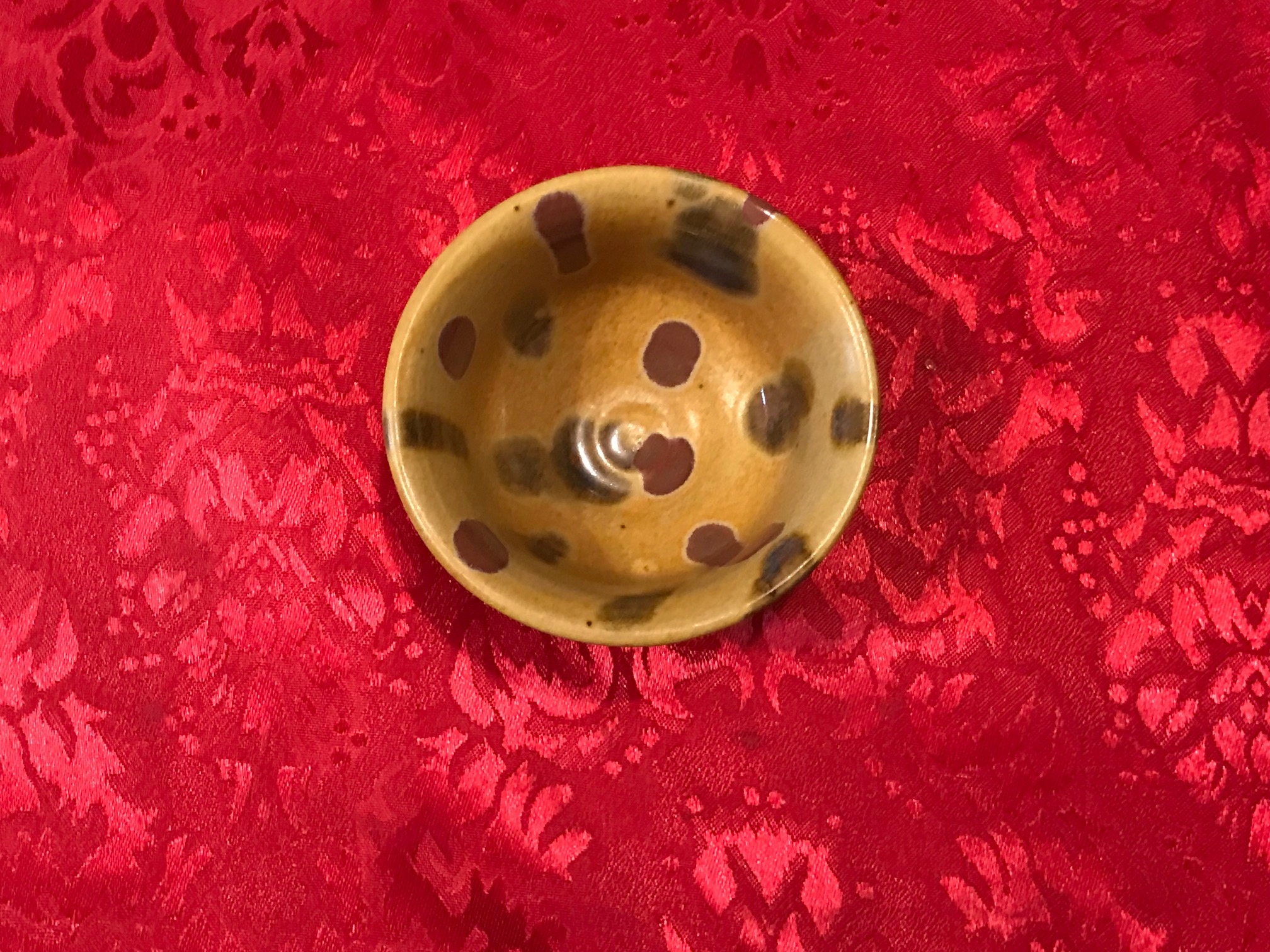Handmade Spotted Ceramic Cup: 31 +/- 8 ppm Lead (in the base ceramic) & 18 +/- 7 ppm Cadmium in the red glaze.

Base yellow of glaze:
- Barium (Ba): 3,416 +/- 264 ppm (Barium is commonly found in yellow glazes)
- Tin (Sn): 3,328 +/- 81 ppm
- Zinc (Zn): 61 +/- 25 ppm
- Copper (Cu): 332 +/- 35 ppm
- Iron (Fe): 7,221+/- 187 ppm
- Bismuth (Bi): 96 +/- 15 ppm
Reddish spot of glaze:
- Cadmium (Cd):18 +/- 7 ppm
- Barium (Ba):147 +/- 47 ppm
- Tin (Sn): 1,324 +/- 44 ppm
- Zinc (Zn): 424 +/- 43 ppm
- Iron (Fe): 6,355 +/- 352 ppm
- Vanadium (V): 175 +/- 28 ppm
- Titanium (Ti): 385 +/- 46 ppm
- Indium (In): 25 +/- 10 ppm
Greenish/brownish spot of glaze:
- Barium (Ba): 1558 +/- 75 ppm
- Tin (Sn): 993 +/- 37 ppm
- Zinc (Zn): 214 +/- 32 ppm
- Copper (Cu): 588 +/- 61 ppm
- Iron (Fe): 13,000 +/- 500 ppm
- Bismuth (Bi): 38 +/- 11 ppm
- Vanadium (V): 1,945 +/- 133 ppm
- Titanium (Ti): 15,400 +/- 600 ppm
- Indium (In): 22 +/- 10 ppm
Unglazed ceramic on bottom of cup
- Lead (Pb): 31 +/- 8 ppm
- Barium (Ba): 1,010 +/- 207 ppm
- Tin (Sn): 3,314 +/- 78 ppm
- Zinc (Zn): 155 +/- 20 ppm
- Copper (Cu): 66 +/- 25 ppm
- Nickel (Ni): 38 +/- 19 ppm
- Iron (Fe): 3,360 +/- 121 ppm
- Bismuth (Bi): 56 +/- 11 ppm
- Titanium (Ti): 2,821 +/- 495 ppm
This dish was tested for a minimum of 60-seconds on each component with each (repeated) test to make sure to report the most accurate possible reading.
I will update this post with more information shortly, but in the meantime – please read some of the other posts I have written about vintage dishware to better understand the test results reported on this website.
As always – thank you for reading and for sharing my posts.
Please let me know if you have any questions.
Tamara Rubin
#LeadSafeMama


Never Miss an Important Article Again!
Join our Email List



